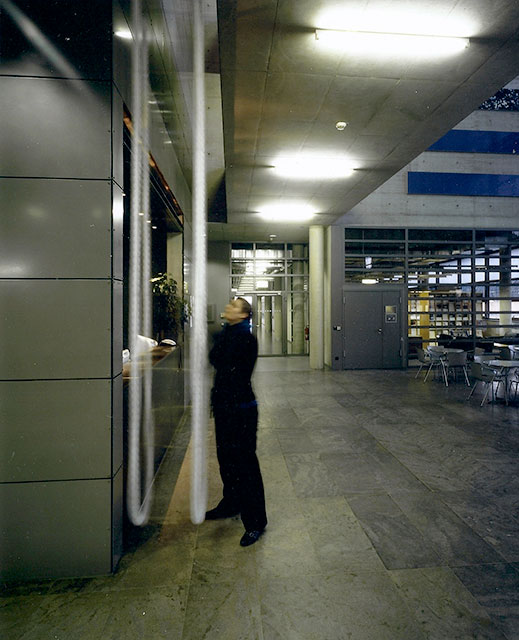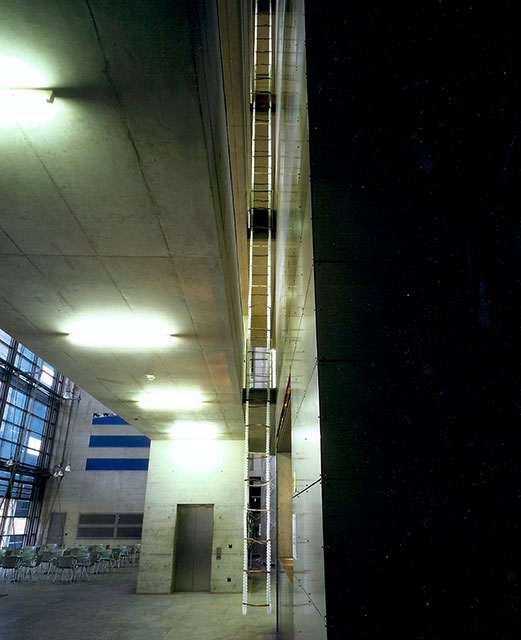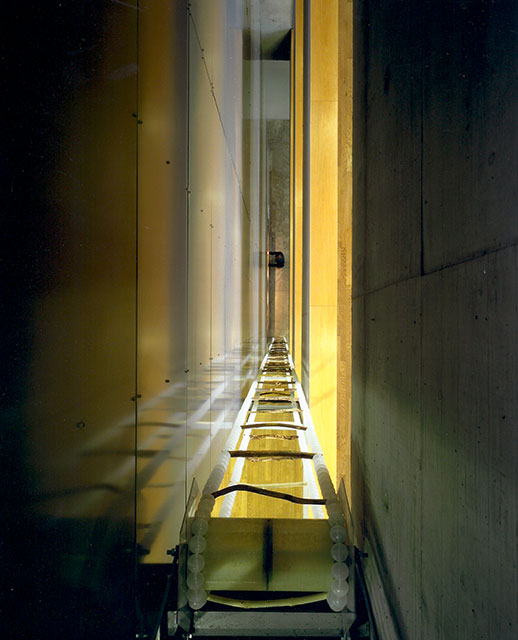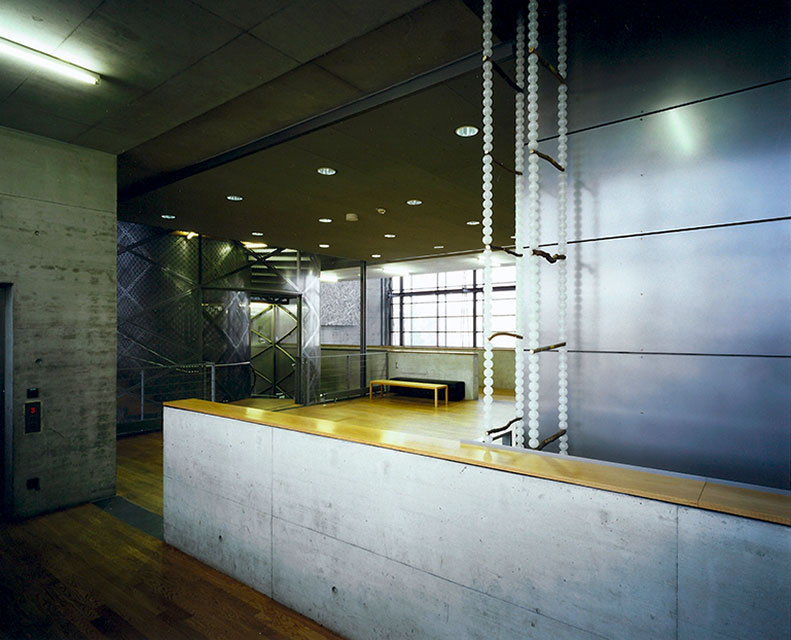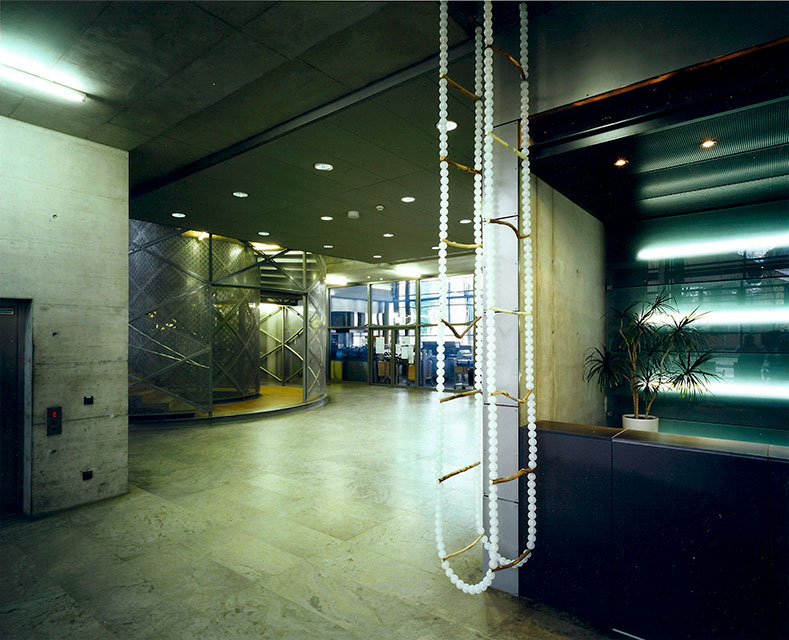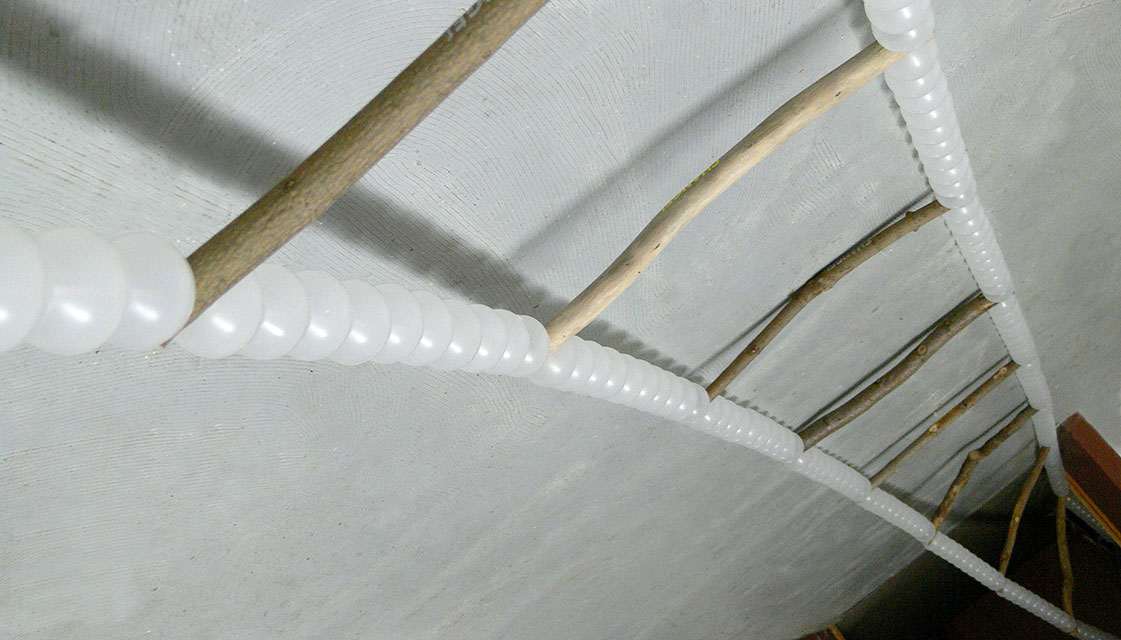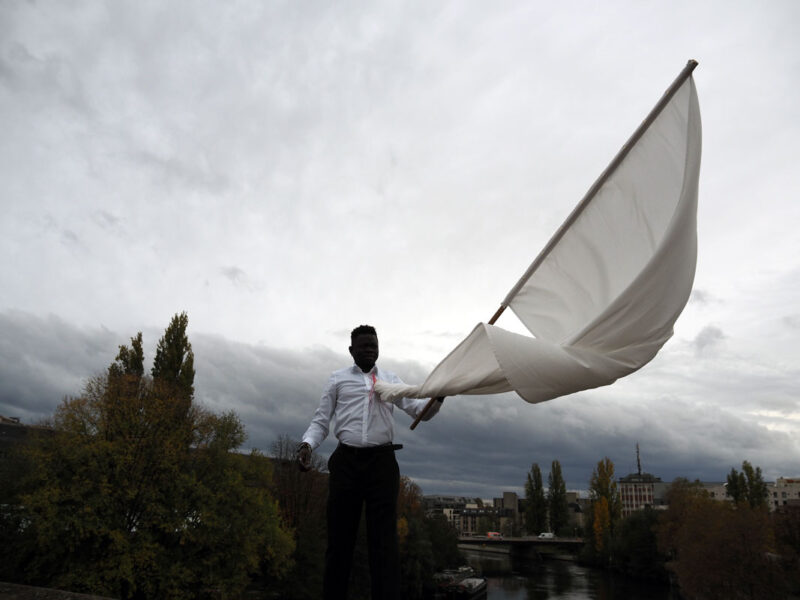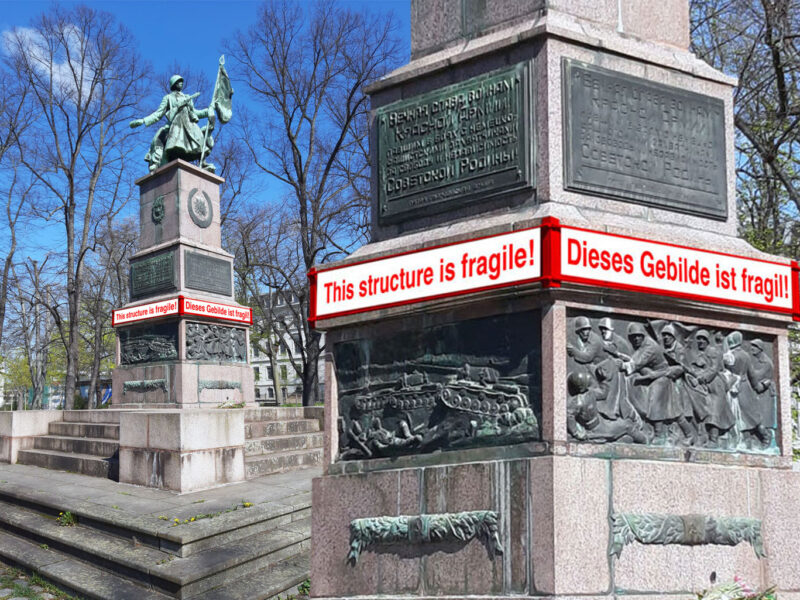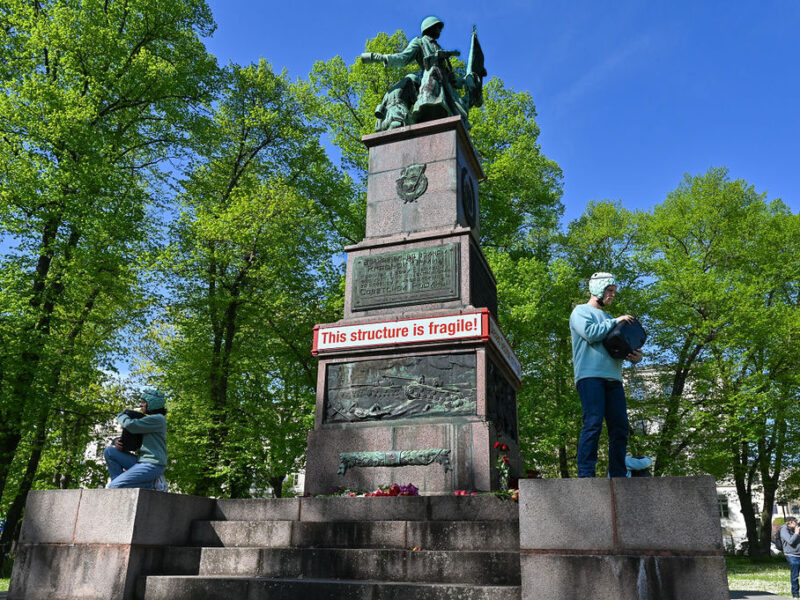PROGRESS
PRESS RELEASE ON „PROGRESS“ MAX-PLANCK-INSTITUT-CBG DRESDEN
The artist Svea Duwe, who lives in Dresden and was born in Erlangen, takes up the architecture of the institute building in her art project. The central spiral staircase – the core of the research building and at the same time the communication axis of the institute – is modelled on the double helix of genetic information (DNA).
Duwes‘ installation „Fortschritt“ is a rope ladder-like formation that runs through the research center from the ground floor to the fourth floor at a central location.
„The attentive observer will notice that the ascent within the alternative route is only possible in thought“ explains Svea Duwe. In fact, the object is a closed, movable circuit.
Thus, the artist, who was also awarded the Hegenbarth Fellowship in 2007, combines architecture, biology and the infinite character of research work and the pursuit of knowledge into an art object. At the same time, the artist refers ambiguously to the limitations of development by taking „progress“ ad absurdum through the impossibility of climbing up a rope ladder similar to making progress in a hamster wheel.
////
PRESSETEXT ZU „FORTSCHRITT“ MAX-PLANCK-INSTITUT-CBG DRESDEN
Die in Dresden lebende, in Erlangen geborene Künstlerin Svea Duwe greift in ihrem Kunstprojekt die Architektur des Institutsgebäudes auf. Die zentrale Wendeltreppe – der Kern des Forschungsbaus und zugleich die Kommunikationsachse des Institutes – ist der Doppelhelix der Erbinformation (DNA) nachempfunden.
Duwes Installation „Fortschritt“ ist eine strickleiterähnliche Formation, die das Forschungszentrum an einer zentralen Stelle vom Erdgeschosses bis in das vierte Stockwerk durchzieht.
„Der aufmerksame Beobachter wird feststellen, dass der Aufstieg innerhalb der alternativen Wegführung nur gedanklich möglich ist“ erklärt Svea Duwe. Tatsächlich sei das Objekt ein in sich geschlossener, bewegbarer Kreislauf.
Damit vereint die Künstlerin, die 2007 auch das Hegenbarth-Stipendium erhalten hat, Architektur, Biologie und den unendlichen Charakter der Forschungsarbeit sowie das Streben nach Wissen in ein Kunstobjekt. Die Künstlerin verweist zugleich mehrdeutig auf die Begrenztheit von Entwicklung, indem sie den „Fortschritt“ durch die Unmöglichkeit des Aufstiegs innerhalb der Strickleiter ähnlich dem Vorankommen in einem Hamsterrad ad absurdum führt.


